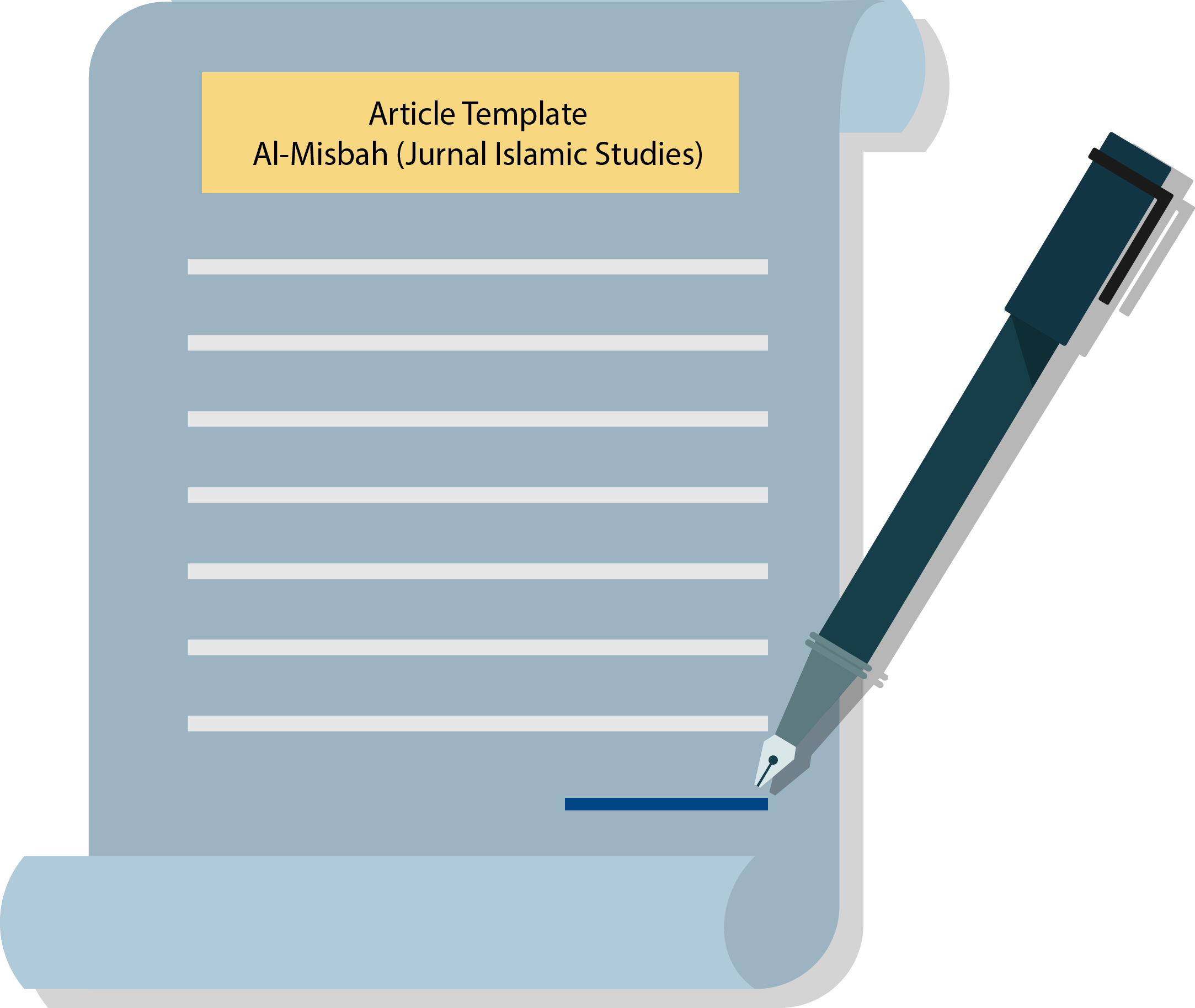The Prophetic Dimension of KH. Ahmad Dahlan’s and KH.Hasyim Asy’ari’s Thought and its Implication in Education
DOI:
https://doi.org/10.26555/al-misbah.v9i1.1955Keywords:
Prophetic dimension, KH. Ahmad Dahlan, KH. Hasyim Asy’ari, Muhammadiyah, Nahdlatul UlamaAbstract
Prophetic dimension owned by KH. Ahmad Dahlan and KH. Hasyim Asy’ari is a privilege that they had. Muhammadiyah and NU education that realizes the thoughts of its founding fathers should have synergy in terms of the prophetic dimensions owned by the founding fathers. Research on Muhammadiyah Education and Muhammadiyah Teaching and NU Education and NU Teaching by studying the thoughts of KH. Ahmad Dahlan and KH. Hasyim Asy’ari through a prophetic analysis is necessary because it could be a material for the evaluation and development of Islamic Education in Indonesia to give more benefits for umat (society). The aims of research are to know the prophetic dimensions of KH. Ahmad Dahlan and KH. Hasyim Asy'ari about the concept of education and its implications in education. The results showed that KH owns the prophetic dimension in the humane education, element of liberation, element of transcendence, and direction in prayers. The Prophetic Dimension of KH. Hasyim Asy’ari is in the element of humane education, element of liberation, resistance to colonizers, element of transcendence, pure intention for knowledge seekers. The implications of the prophetic dimensions owned by KH. Ahmad Dahlan and KH. Hasyim Asy’ari on Muhammadiyah dan NU education for the development of Islamic Education in Indonesia are found on the aspect of system development of which the realization is the development of policy regarding the content of Islamic Education Curriculum at Schools.References
Ali, M. (2010). Reinvensi Pendidikan Muhammadiyah. Al-Wasat Publishing House.
Amal, M. (2017). PERANANAN K.H. AHMAD DAHLAN DALAM PENGEMBANGAN ISLAM. UNIVERSITAS ISLAM NEGERI ALAUDDIN, 53(9), 1689–1699.
Arikunto, S. (2013). Prosedur Penelitian: Suatu Pendekatan Praktik. Rineka Cipta.
Asrofi, Y. (1983). Kyai Haji Ahmad Dahlan : Pemikiran dan Kepemimpinannya. Yogyakarta Offset.
Asy’ari, K. H. (2007). Etika Pendidikan Islam :Petuah KH. Hasyim Asy’ari untuk para Guru (Kyai) dan Murid (santri) (Terjemahan Mohammad Kholil). Titian Wacana.
Creswell, J. W. (2013). Research Design Pendekatan Kualitatif, Kuantitatif dan Mixed. Pustaka Pelajar.
Fadhlurrahman. (2020). Kebijakan Tentang Kurikulum Pendidikan Agama Islam Pada Era Reformasi; Penerapannya Pada Sekolah Non Islam di Purworejo. SALIHA, 3, 85–114.
Fahmi, M. (2005). Islam Transendental, Menelusuri Jejak-Jejak Pemikiran Islam Kuntowijoyo. Pilar Media.
Falikah, T. Y. (2020). Peran Dukungan Sosial dalam Peningkatan Motivasi Berprestasi pada Remaja dari Keluarga Menengah Kebawah di Kabupaten Kudus. Al-Misbah (Jurnal Islamic Studies), 8(1), 39–46. https://doi.org/10.26555/almisbah.v8i1.1990
Hadjid, K. (2011). Pelajaran KH. Ahmad Dahlan 7 fasafah Ajaran dan 17 kelompok ayat Al-Qur’an. MPI PP Muhammadiyah.
Heddy, S. A. P. (2017). Paradigma Profetik Islam Epistemologi, Etos dan Model. UGM Press.
Jamhari. (2016). Implikasi Pemikiran K.H. Dahlan Terhadap Perkembangan Pendidikan Islam.
Khuluq, L. (2013). Fajar Kebangunan Ulama Biografi KH. Hasyim Asy’ari. LKis.
Kuntowijoyo. (2001). Muslim tanpa masjid : Esai-esai agama, budaya dan politik dalam bingkai strukturalisme transendental. Mizan.
Makruf, S. A. (2017). Urgensi Kepemimpinan Profetik dalam Mewujudkan Masyarakat Madani. Ta’dib: Jurnal Pendidikan Islam, 6(2), 7–16. https://doi.org/10.29313/tjpi.v6i2.3169
Martono, M. (2020). Pemikiran Pendidikan Islam KH. Hasyim Asy’ari (Perspektif Epistimologi Sosial Keagamaan Dan Konsep Pendidikan Islam Bagi Guru Dan Peserta Didik). AL-FIKR: Jurnal Pendidikan Islam, 6(1), 40–45. https://doi.org/10.32489/alfikr.v6i1.68
Moeloeng, L. (2007). Metodologi Penelitian Kualitatif. Remaja Rosdakarya.
Roqib, M. (2014). Pendidikan Karakter Dalam Perspektif Profetik. Jurnal Pendidikan Karakter, 0(3), 240–249.
Roqib, M. (2016). Rekontruksi Kinerja Pendidikan NU di Era Global Perspektif Profetik. INSANIA, 21. http://ejournal.iainpurwokerto.ac.id/index.php/insania/article/view/1404
Sanusi, S., & Misran, M. (2019). Manajemen Kurikulum Pendidikan Al-Islam Dan Kemuhammadiyahan. Kelola: Journal of Islamic Education Management, 4(2), 117–126. https://doi.org/10.24256/kelola.v4i2.871
Suharto, T. (2014). Gagasan Pendidikan Muhammadiyah dan NU Sebagai Potret Pendidikan Islam Moderat di Indonesia. ISLAMICA: Jurnal Studi Keislaman, 9(September), 203.
Sukmadinata, N. S. (2005). Metode Penelitian Pendidikan. Remaja Rosdakarya.
Vink, R. M., van Dommelen, P., van der Pal, S. M., Eekhout, I., Pannebakker, F. D., Klein Velderman, M., Haagmans, M., Mulder, T., & Dekker, M. (2019). Self-reported adverse childhood experiences and quality of life among children in the two last grades of Dutch elementary education. Child Abuse & Neglect, 95, 104051. https://doi.org/10.1016/j.chiabu.2019.104051
Zuhairi, M. (2010). Hadratusysyaikh Hasyim Asy’ari: Moderasi, Keumatan dan Kebangsaan,. Kompas.
Downloads
Published
How to Cite
Issue
Section
License
Authors who publish with Al-Misbah agree to the following terms:
- Authors retain copyright and grant the journal right of first publication with the work simultaneously licensed under a Creative Commons Attribution License (CC BY-SA 4.0) that allows others to share the work with an acknowledgment of the work's authorship and initial publication in this journal.
- Authors are able to enter into separate, additional contractual arrangements for the non-exclusive distribution of the journal's published version of the work (e.g., post it to an institutional repository or publish it in a book), with an acknowledgment of its initial publication in this journal.
- Authors are permitted and encouraged to post their work online (e.g., in institutional repositories or on their website) prior to and during the submission process, as it can lead to productive exchanges, as well as earlier and greater citation of published work.

This work is licensed under a Creative Commons Attribution-ShareAlike 4.0 International License.



